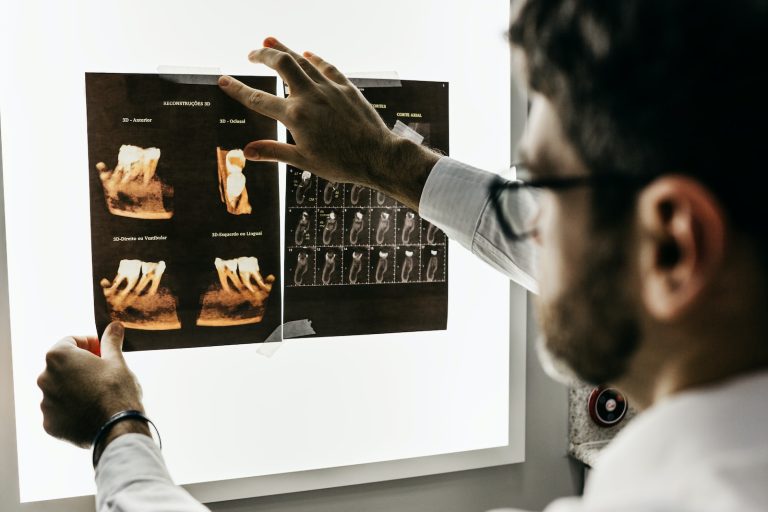A root canal is a dental procedure performed to treat an infection or damage within the pulp of a tooth. The pulp is the innermost part of the tooth that contains nerves, blood vessels, and connective tissues. When the pulp becomes infected or inflamed, a root canal is often recommended to save the tooth and alleviate pain.
Here’s an overview of what typically happens during a root canal:
Diagnosis and Examination: The process begins with a thorough examination and diagnosis by the dentist. Symptoms such as severe toothache, sensitivity to hot or cold, swelling, or a pimple on the gums may indicate the need for a root canal.
X-rays: X-rays are taken to get a clear view of the tooth’s root canals and surrounding structures. This helps the dentist identify the extent of the infection and plan the treatment.

Local Anesthesia: Before starting the procedure, the dentist administers local anesthesia to numb the affected tooth and the surrounding area. This ensures the patient remains comfortable during the root canal.
Isolation: The dentist places a rubber dam around the tooth to keep it dry and free from saliva during the procedure. This also prevents contamination of the root canal.
Access Opening: The dentist creates a small opening in the crown of the tooth to access the pulp chamber and root canals. This step is performed using specialized dental instruments.
Cleaning and Shaping: The infected or damaged pulp is carefully removed from the pulp chamber and root canals using files. The canals are then cleaned and shaped to prepare them for the filling material.

Irrigation: The root canals are irrigated with a disinfecting solution to remove any remaining debris and bacteria. This helps ensure the canals are thoroughly cleaned.
Filling: After cleaning and shaping, the prepared root canals are filled with a biocompatible material called gutta-percha. This material seals the canals to prevent further infection.
Sealing the Access Opening: The access opening created in the crown is sealed with a temporary or permanent filling. In some cases, a crown may be recommended to provide additional protection and restore the tooth’s strength.
Follow-Up: In some cases, the dentist may prescribe antibiotics to manage any remaining infection. Follow-up appointments are scheduled to monitor the healing process and, if necessary, to place a permanent crown on the treated tooth.
Successful Root Canals
A successful root canal can save a tooth from extraction and relieve pain associated with pulp infection. Advances in dental technology and techniques have made root canals more efficient and comfortable for patients.
